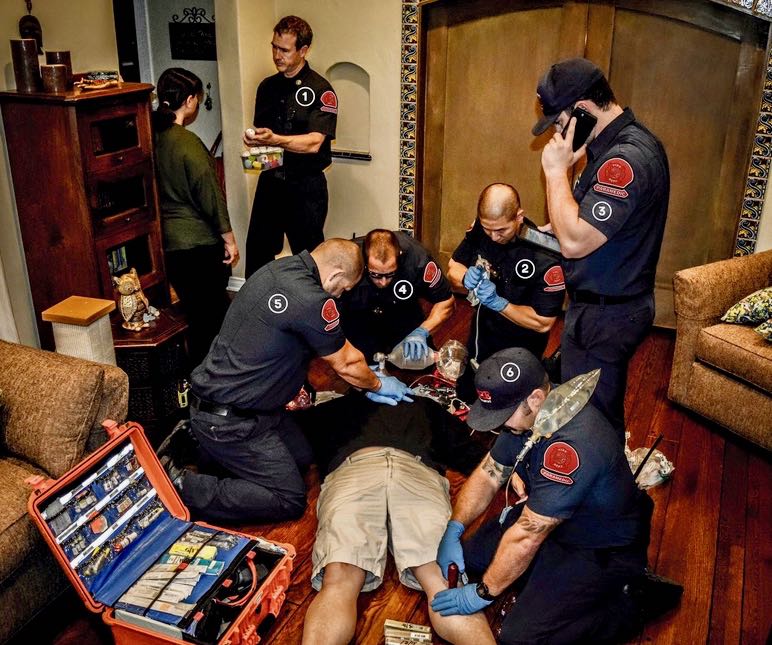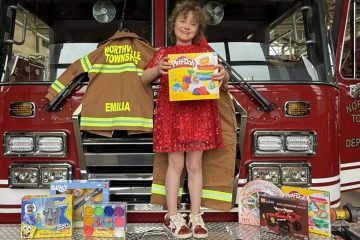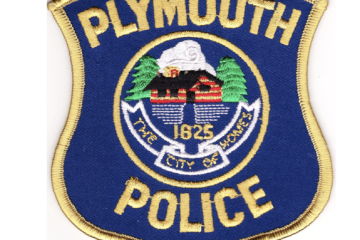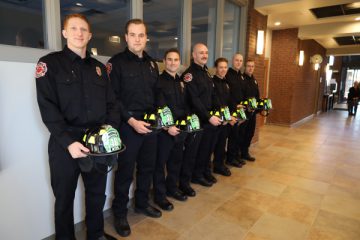Who could disagree with saving lives?

If this were you or your loved one, which team member would you want to give up?
Feb. 11, 2018 PLYMOUTH VOICE.
Plymouth Michigan News
OPINION
We can do more each year than just honor the men and women of our community who make up our police and fire departments-those individuals who each day place their life on-the-line to save our lives. We must assure they have ample manpower, equipment and training for their protection and ours.
Survey and emergency response data analysis prove the odds of surviving cardiac arrest-a short circuit in the heart-depend not only on where you are, where you live and how fast you get treatment, but having the correct number of trained professionals on hand within six minutes or less to save your life. Critical statistics from Mayo Clinic show lives are saved or lost within the first six minutes of the onset of cardiac arrest.
Survival is not just a matter of geography and response times but having a fire department in place that meets professional and recommended staffing levels for first responders, firemen and paramedics; with firefighters reaching victims first and performing basic care until paramedics arrive to administer Advanced Life Support.
According to the IAFF, International Association of Firefighters, the average fire department responds to more than twice as many medical emergencies versus fires.
National research data shows that people die needlessly each year in the US because cities fail to make basic, often inexpensive changes, in the way they fund, staff and deploy ambulances, paramedics and fire trucks. The experts say having enough manpower and equipment to respond to a dire emergency, like cardiac arrest, has a direct bearing on survival rates, often over and above response times.
We need to inform our community residents and electorate of the risks and disparities so we can be sure we have invested wisely in community public safety funding to give our police officers and firefighters strong leadership, ample training, education and effective response protocols.
MORE:
Heroes-Northville responders honored for saving life
Key to gallery photo:
(1) Captain / Paramedic-Consoles loved ones, gathers facts from witnesses, obtains pertinent patient medical history from family members, finds patient’s prescription medications, explains what is going on to family members, overall scene management and crowd control, if necessary.
(2) Firefighter / Paramedic-In charge of patient care, delegates assignments to crew members, attaches patient to defibrillator, interprets EKG/ECG reading, when indicated administers electrical shock via the defibrillator, obtains patients vital signs.
(3) Firefighter / Paramedic-Contacts base hospital, obtains medical direction from base hospital physician, documents patient care being administered, completes patient care report form which is vital during transferring of care to emergency room, drives the ambulance.
(4) Firefighter / Paramedic-Maintains patient airway, provides supplemental oxygen via bag valve mask, provides positive pressure ventilation which is crucial for vital organ survivability, preps and performs intubation to establish an advanced airway.
(5) Firefighter / Paramedic-Provides continuous chest compressions at a rate of 100 compressions per minute. Compressions must be uninterrupted to endure brain and tissue perfusion.
(6) Firefighter / Paramedic-Establishes intravenous access through an intraosseous cannulation. Maintains a patient IV line. Checks blood sugar levels which is critical in diabetic patients. Administer lifesaving cardiogenic medications, which can potentially restart the heart.
Plymouth Voice.
Photo: Courtesy IAFF



